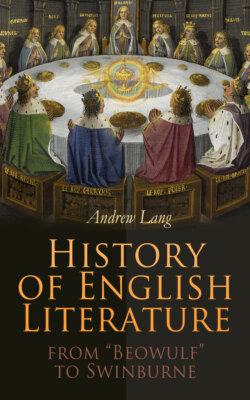Читать книгу History of English Literature from "Beowulf" to Swinburne - Andrew Lang, Robert Kirk - Страница 18
На сайте Литреса книга снята с продажи.
Dream of the Rood.
ОглавлениеThere is a singular poem "The Dream of the Rood," which with many other "masterless" poems, some critics assign to Cynewulf, on account of the style, and the deep personal feeling which we admire in the "Crist": others attribute it to Cædmon. This opinion was partly based on a curious set of facts. The followers of the great Reformer, John Knox, in Scotland (1560) destroyed almost all the "monuments of idolatry" as they called works of Christian art. But they forgot to break to powder a tall ancient cross of red sandstone, beautifully carved, and marked with Runic characters, in the church of Ruthwell, near Dumfries. Some eighty years later (1642) when the Covenanters were in arms against Charles I, the preachers began a new war against works of Christian art, and ordered the Ruthwell Cross to be destroyed. It was broken into several fragments, which have now been pieced together, and the Cross stands in an apse-shaped building adjoining the church. The Runic characters record a part of the poem styled "The Dream of the Rood," and give the inscription "Cædmon me made", probably Cædmon was really the artist who made and carved the stone cross: indeed the name is rather hard to read.
The poem speaks of the author's wonderful dream of the gold adorned and jewelled True Cross, and, in "Elene," Cynewulf also speaks of the revelation to him of the light of the Truth of the Cross. Conceivably, then, Cynewulf really had a dream or vision, and became devout after a life of war and minstrelsy.
